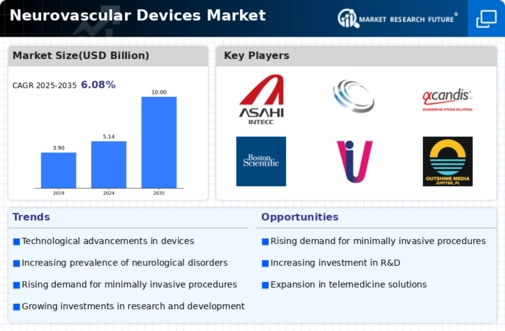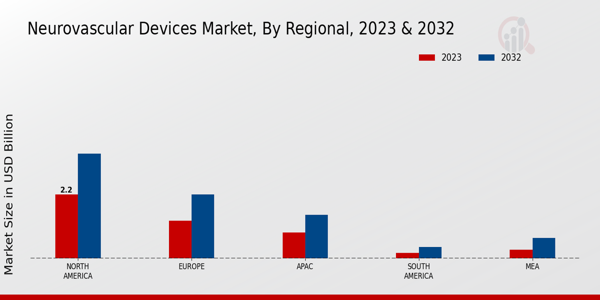Growing Geriatric Population
The aging global population is a crucial factor influencing the Global Neurovascular Devices Market Industry. As individuals age, the risk of neurovascular disorders escalates, leading to a higher demand for neurovascular interventions. The United Nations projects that the number of people aged 65 and older will reach 1.5 billion by 2050, which is likely to increase the incidence of conditions such as stroke and vascular dementia. This demographic shift necessitates the development and distribution of neurovascular devices tailored to the needs of older patients, thereby driving market expansion and innovation in device design and functionality.
Increased Healthcare Expenditure
Rising healthcare expenditure across the globe is significantly impacting the Global Neurovascular Devices Market Industry. Governments and private sectors are investing more in healthcare infrastructure, leading to improved access to advanced medical technologies. For example, countries with robust healthcare systems are allocating substantial budgets for neurovascular treatments, which includes funding for neurovascular devices. This trend is expected to continue, as healthcare spending is projected to grow, facilitating the adoption of innovative neurovascular solutions. Consequently, this increased investment is likely to enhance the market's growth trajectory in the coming years.
Rising Incidence of Neurovascular Disorders
The increasing prevalence of neurovascular disorders, such as stroke and aneurysms, is a primary driver for the Global Neurovascular Devices Market Industry. According to health statistics, stroke remains one of the leading causes of death and disability worldwide. The World Health Organization indicates that approximately 15 million people suffer from strokes annually, with a significant portion requiring neurovascular interventions. This growing patient population necessitates advanced neurovascular devices, contributing to the market's projected growth from 5.14 USD Billion in 2024 to an estimated 10.0 USD Billion by 2035, reflecting a compound annual growth rate of 6.26% from 2025 to 2035.
Technological Advancements in Device Design
Innovations in neurovascular device technology are propelling the Global Neurovascular Devices Market Industry forward. Recent advancements include the development of minimally invasive techniques and enhanced imaging technologies that improve the precision of neurovascular interventions. For instance, the introduction of advanced stent retrievers and flow diverters has revolutionized the treatment of cerebral aneurysms and ischemic strokes. These innovations not only enhance patient outcomes but also increase the efficiency of procedures, thereby driving market growth. As healthcare providers adopt these cutting-edge technologies, the demand for neurovascular devices is expected to rise significantly.
Regulatory Approvals and Supportive Policies
Regulatory approvals and supportive government policies play a pivotal role in shaping the Global Neurovascular Devices Market Industry. Regulatory bodies are increasingly streamlining the approval processes for neurovascular devices, thereby expediting their entry into the market. For instance, initiatives aimed at fostering innovation and ensuring patient safety are being implemented, which encourages manufacturers to invest in research and development. Additionally, government policies promoting the use of advanced medical technologies in healthcare settings further bolster market growth. As a result, the favorable regulatory environment is likely to enhance the availability and adoption of neurovascular devices.





















